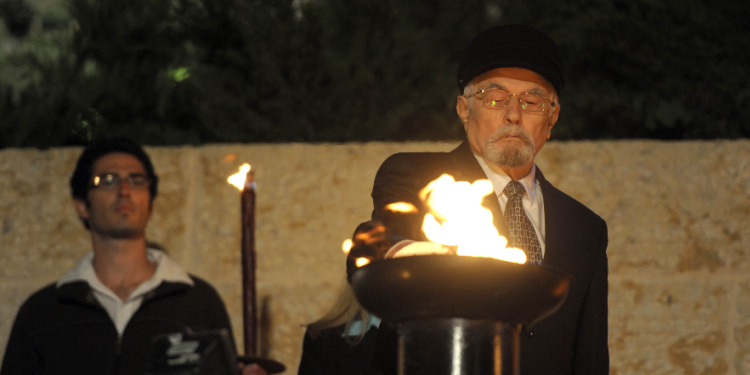‘Let My People Go’
Stand for Israel | April 7, 2021

Raised in a Jewish family in Minsk, Belarus, a teenaged Anatoly Rubin found himself fleeing strafing Luftwaffe fighter planes when the Nazis invaded the Soviet Union in 1941.
Surviving the Holocaust
Anatoly’s family separated, the boy and his aunt hid for a time with a Jewish blacksmith. Returning to Minsk, Anatoly found his mother, sisters, and another aunt. But he also found his father dead, murdered while searching for his lost family.
In Minsk, Nazis placed the Rubin family in the city’s ghetto, along with thousands of other Jews. Anatoly’s sister Tamara, her hair blonde and features “Aryan,” passed as a gentile, able to sneak in and out of the ghetto to provide the family with necessities.
Tamara escaped the ghetto, fighting against the Nazis with a group of partisans. Anatoly, too, escaped the Nazis’ liquidation (murder) of the ghetto’s Jews, working with slave labor crews. The rest of the Rubin family, however, died in the Nazis’ killing pits.
Receiving lifesaving Aryan papers from partisans, he worked as a gentile on a local farm. This, too, proved dangerous, as other partisans nearly killed the boy, suspecting him to be a German spy.
Soviet Anti-Semitism
Anatoly Rubin, unlike the rest of his family, survived the war. Too young to fight in the Red Army, he earned room and board at a trade school, but dreamed of making aliyah (immigrating) to the Holy Land, his people’s historic and biblical homeland.
However, Rubin’s Zionist views directly opposed those of the ruling Communists. Arrested for his Jewish views and sentenced to hard labor in a Soviet gulag, Anatoly trained there as a boxer and won fight after fight until his release.
Anatoly’s boxing proved helpful in a number of ways. First, it allowed him to defend himself from the constant anti-Semitic violence he faced. Also, it allowed him to travel. In Riga, Latvia, for a boxing tournament, Anatoly Rubin encountered Jews who freely worshiped – for the first time since he was a boy before the Holocaust began. This only strengthened his Zionist activities.
The KGB, however, closely watched this “dangerous” Zionist influence. Charging Rubin with treason, the Soviet authorities tried to force him to talk. Anatoly Rubin, however, refused to give up his fellow Zionists. Instead, he used his trial as a podium to speak out against Soviet anti-Semitism, as well as to declare his desire to live in Israel.
The Soviets sentenced Rubin to six years in a gulag. There, his health failed, as he only lived on a starvation diet, worked standing in freezing water, and faced other inhuman conditions. But, after finally being released, Rubin said, “I was stepping out into the biggest prison camp of them all—the Soviet Union itself.”
Aliyah at Last
The KGB continued to follow Rubin, suspecting him of practicing his Jewish faith. He eluded them, and at last received an invitation from Israel to make aliyah.
In Israel, Anatoly Rubin did not stop. He called for the Israeli government to continue aiding Jews in the Soviet Union, to “Let my people go.” He also used his boxing expertise in his work as an instructor of physical education at Hebrew University in Jerusalem. His autobiography, My Path to the Land of Israel, earned him nationwide acclaim. And in 2012, five years before his death in Jerusalem at the age of 89, Anatoly Rubin remembered the six million Jews – Jews just like himself – on Yom HaShoah, lighting the memorial torch at Yad Vashem.
